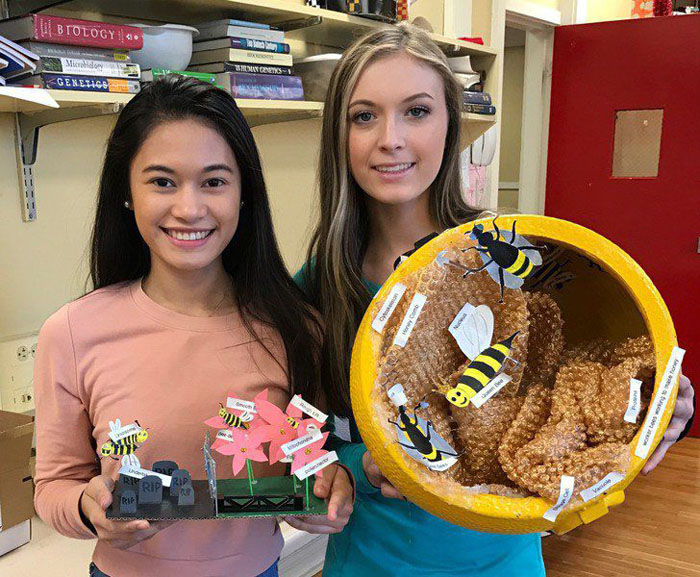Cells come to life for freshmen
Published 8:00 am Saturday, December 31, 2016

- Submitted photo Thomasville City Scholars Academy’s Muriel Sarabia and Kaitlyn Jackson show off their cell analogy project, which compared a beehive to a cell.
Thomasville Scholars Academy ninth graders in Jamie Gammel’s class went beyond merely labeling the parts of a cell, and elevated their thinking by connecting cell parts and functions with real-life, non-scientific organizations.
Students were to come up with a three dimensional analogy to demonstrate their understanding of the parts of a eukaryotic cell, its functions, and ways the parts work together to sustain the cell’s life process by choosing a system to which they compared the eukaryotic cell. An example would be a restaurant. As an analogy, it would look like the cook makes the food and ribosomes make the proteins; so the cook would be labeled as a ribosome.
Addie Rinehart and Kelsey Harper chose to do a farm.
“A farm analogy stood out to me because different parts of a cell work together like animals on a farm work together to get things done and make food,” Rinehart said.
Cells are the basic units of life and life forms that we are most familiar with. The most basic characteristic a cell can contain is DNA and ribosomes inside of a semipermeable cell membrane. In addition, there are two major divisions of cell types: prokaryotic and eukaryotic. Eukaryotic cells have a nucleus while prokaryotic cells do not.
Muriel Sarabia and Kaitlyn Jackson did a beehive for their analogy,
“We chose a beehive because just like a cell, bees work together to carry out a task they all benefit from,” said Sarabia.
Students were expected to include the nucleus, cell membrane, rough endoplasmic reticulum, golgi apparatus, ribosomes, mitochondria, protein, nucleolus, cell wall, and central vacuole.
Nik Von Hellens included these cell parts in his analogy of the Dallas Cowboys football team.
“I believe a cell works like a football team with different people doing different tasks so that something can be produced. For a football team that is a win and for a cell it is protein,” Von Hellens said.
“The project helped me to get a better understanding of the cell because focusing on the cell’s functions and addressing it in a 3D project gave me a better hands-on perspective of how a cell works and carries out its tasks,” Sarabia said.
In seventh grade at Scholars Academy, Life Science students do a similar but simpler project where they create a 3D cell which teaches them only the structure and function of a cell.
“In ninth grade we took it a step further by doing an analogy so that they have to actually demonstrate their understanding about what parts of the cell do and what it does in the system.” Gammel said.





